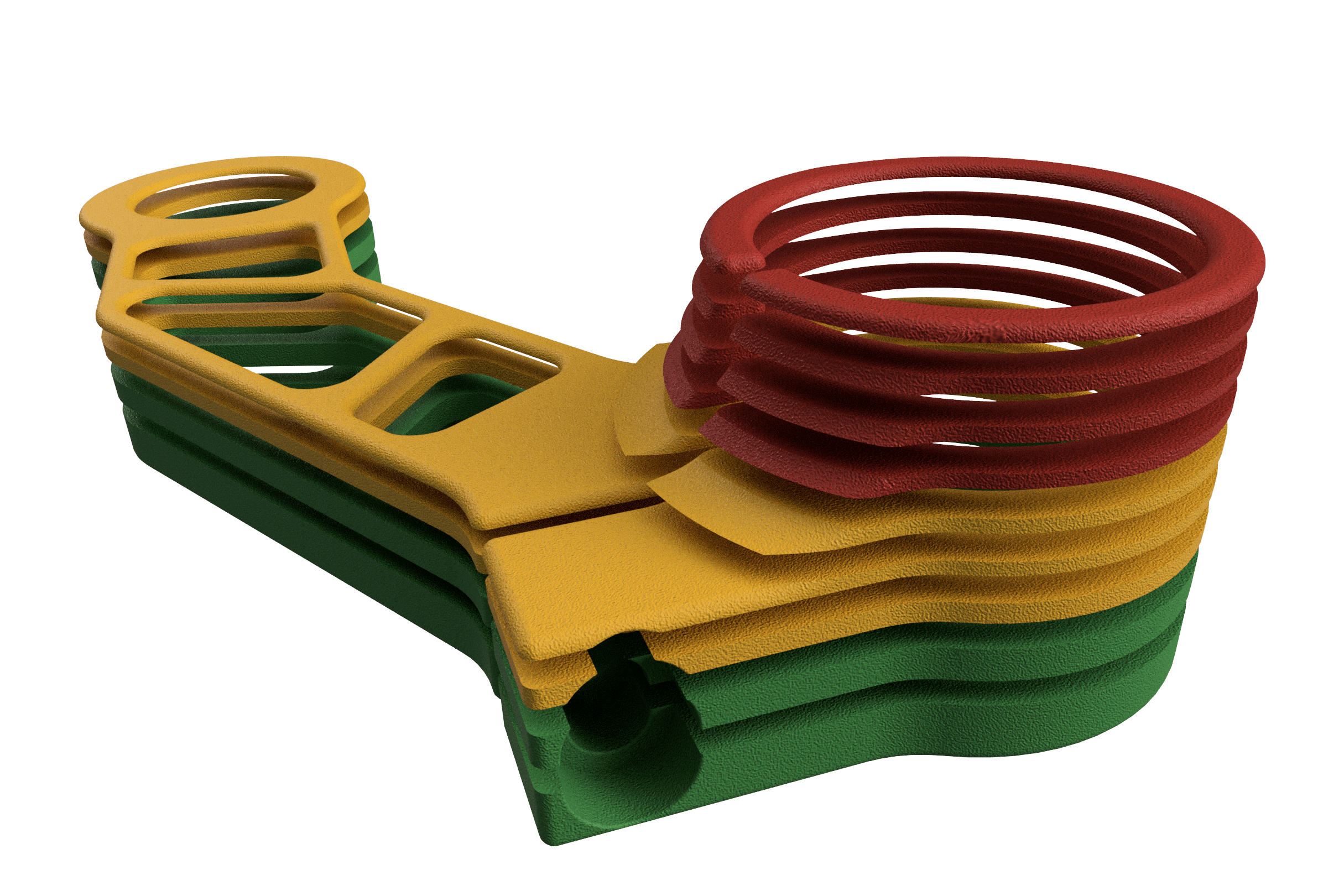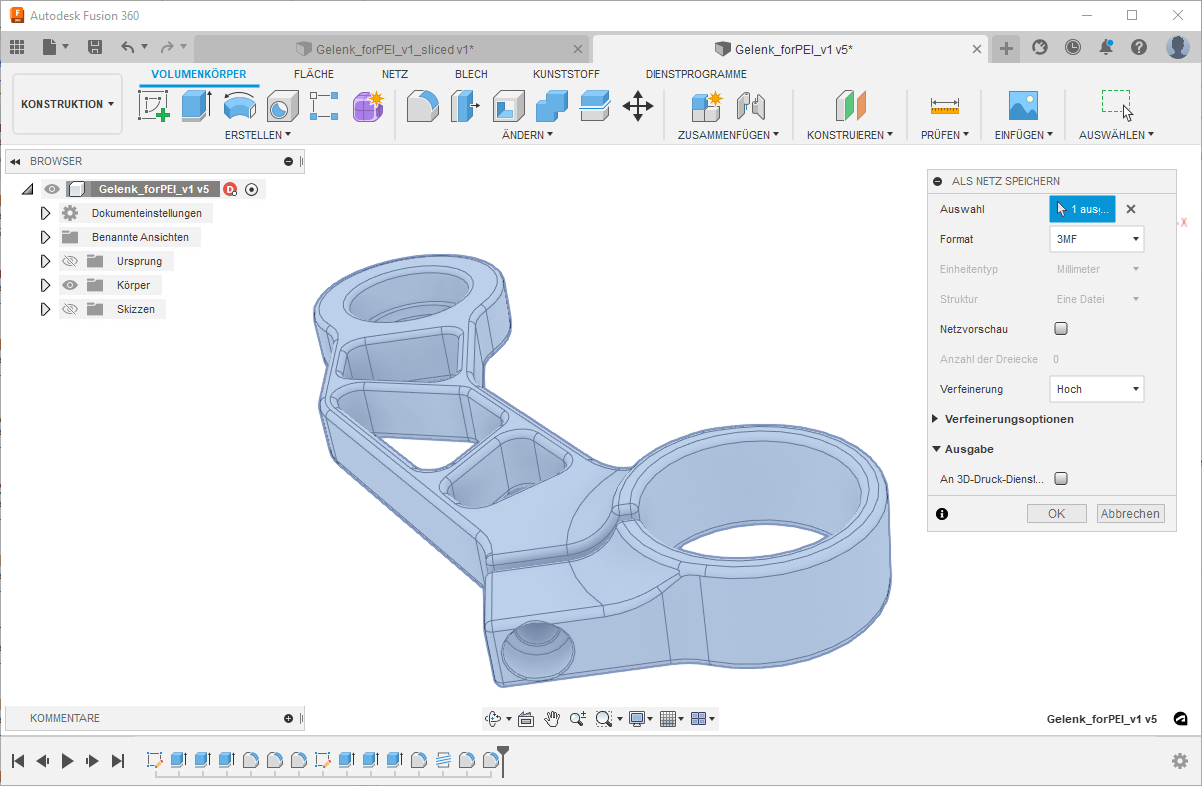3D Manufacturing Format
The file format specifically for additive manufacturing processes
In the following article, we will introduce you to the "3D Manufacturing Format" file format and give you an overview of the advantages and possibilities it can offer in additive manufacturing.

What is the 3D Manufacturing Format?
The 3D Manufacturing Format, or 3MF for short, is a modern file format for 3D printing that was developed specifically with additive manufacturing in mind. The format allows 3D object models to be rendered for a variety of applications, platforms, services and printers. The goal in the development was to create a file format that can work with the latest versions of 3D printers and fix limitations and problems of other 3D file formats, such as STL.
Where does the 3MF come from?
The 3D Manufacturing Format was launched by the so-called "3MF Consortium". This consortium is a group of computer software, hardware and additive manufacturing developers established in 2015 by key players in the additive manufacturing industry. These include Microsoft, Autodesk, EOS, HP, Stratasys and Ultimaker, among others. The 3MF Consortium is part of the Joint Development Foundation Projects, LLC, a non-profit organization and subsidiary of the Linux Foundation that provides the infrastructure by which groups can establish and operate standards and source code development collaborations.
With 3MF, the consortium aimed to develop a file format that includes the following features:
- Complete: All required model, material and property information is contained in a single archive.
- Readable by humans: Development is simplified by the use of common structures such as OPC, ZIP and XML.
- Simple: A short and clear specification ensures easy development and fast validation.
- Extensible: By using XML namespaces, public and private extensions become possible while maintaining compatibility.
- Clear: Consistency of a file from digital to physical form is ensured through clear language and conformance testing.
- Free of charge: Access to and implementation of the 3MF specifications is and will remain free of charge.
What advantages does 3MF have over other file formats?
The current industry standard for data exchange in additive manufacturing is the STL (Standard Tessellation Language) format. This was introduced in 1987 and is thus already very old by information technology standards. Its age is one of the reasons why the STL format has some significant drawbacks.
On the one hand, the format contains only information about external surfaces and shape of the object, but not about texture, color or material properties. With 3MF, on the other hand, all this information can be provided, which can save a lot of time depending on the printer and the application.
Furthermore, STL does not store an accurate mathematical representation of the 3D model. Instead, the surface is stored in the form of tessellations. Here, the surface of the 3D model is encoded by numerous triangles that cover the model. Since these triangles are stored completely unordered, it is difficult to change the data format afterwards. In addition, STL files are often very large because the triangles used have common vertices and are therefore listed multiple times, resulting in huge amounts of data.
3MF, on the other hand, uses the same compression method as the popular ZIP format. This not only makes the files much smaller than STL, but also allows them to be easily decompressed to work with the data they contain.
In addition, 3MF contains mathematically accurate geometry data of the 3D model and therefore does not suffer from the typical inaccuracies that can arise with STL from the triangular mesh used. Moreover, by storing the data at 3MF in human-readable XML format, the code can be displayed here and easily modified if necessary.
Besides STL and 3MF, there are of course other file formats that can be used for 3D printing, such as OBJ or VRML. However, these formats were not developed specifically for additive manufacturing. This may result in missing data that is needed by the 3D printer, while at the same time there is a lot of information stored in the files that is unnecessary for 3D printing. While STL and 3MF are widely used and supported by most software and hardware manufacturers, it should be noted that this is not necessarily the case for alternative file formats.

How can 3MF improve the workflow?
The 3MF file format can provide benefits at all stages of the manufacturing process and solutions to problems that can arise with other file formats in additive manufacturing. This is already evident in the design phase. Here, the designer can use 3MF to provide all the information and design specifications needed to produce a 3D printed part. When preparing the construction job, the file format allows for efficient arrangement of parts on a build platform while still maintaining workflow flexibility. In addition, the format can be used to map actual materials and support structures, ensuring that the component will print correctly on that particular printer. 3MF also offers enhancement mechanisms that allow the data to be enriched with customer-specific manufacturing information, enabling AM data to be integrated into existing manufacturing processes. Finally, the 3MF production extension enables production traceability by uniquely identifying all objects on a build platform.